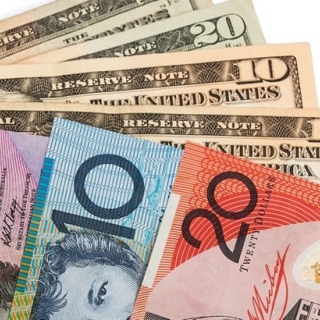


The Australian dollar (AUD) weakened against the US dollar (USD) amid rising risk aversion amid growing concerns over US-China trade tensions. The AUD/USD pair failed to gain support from the Judo Bank Purchasing Managers' Index (PMI) released on Wednesday.
The Judo Bank Australia Composite PMI rose to 51.1 in January from 50.2 in December, reflecting modest growth in private sector activity. Meanwhile, the Judo Bank Services PMI rose to 51.2 from 50.8, marking the twelfth straight month of expansion in the services sector. Despite the modest growth, it was the strongest since August.
The AUD may depreciate further amid increasing likelihood that the Reserve Bank of Australia (RBA) could consider a rate cut in February. The RBA has kept the Official Cash Rate (OCR) at 4.35% since November 2023, stressing that inflation must "sustainably" return to its 2%-3% target range before any policy easing.
The Australian dollar faces challenges as market volatility remains a concern as investors eye the ongoing trade war between the United States (US) and China, Australia's main trading partner. China has retaliated with new US tariffs of 10% that came into effect on Tuesday. However, Trump said on Monday afternoon that he would likely speak to China in the next 24 hours. He also warned, "If we can't get a deal with China, the tariffs will be very, very large."
Source: FXStreet
AUD/USD firms as traders brace for Australia Q3 inflation data and Fed decision The Australian Dollar (AUD) edges higher against the US Dollar (USD) on Tuesday, extending its winning streak for the f...
The Australian dollar (AUD) rose to around $0.656 on Tuesday, its highest level in nearly three weeks. This increase was primarily due to the weakening US dollar (greenback). US market participants aw...
The Australian dollar strengthened against the US dollar on Wednesday, recouping the previous session's losses. This boost came from comments by RBA Assistant Governor Sarah Hunter: recent data appear...
The Australian dollar (AUD) strengthened to around 0.6530 against the US dollar (USD) in the Asian session on Monday, after falling more than 1% in the previous trading session. This strengthening occ...
The Australian dollar strengthened to around $0.657 on Friday (October 10), rebounding from a nearly two-week low. This gain came after RBA Governor Michele Bullock struck a cautious tone: services in...
The Hang Seng Index opened slightly lower by 0.07% to 26,263 on Friday (October 31st), moving flat after a 0.2% decline in the previous session to 26,283. This cautious movement occurred amid mixed sentiment: some technology stocks weakened, while...
Gold prices weakened to around $4,010 an ounce on Friday, poised for a second weekly decline. Pressure stemmed from fading hopes for a Fed rate cut after Jerome Powell asserted that a December rate cut was "not guaranteed," keeping the dollar at a...
Asia-Pacific markets opened mostly higher on Friday, with Japan's Nikkei 225 rising more than 1% to a new record, as investors reacted positively to the truce between Washington and Beijing following a meeting between U.S. President Donald Trump...
 Asian stock markets opened higher on Wednesday (October 29th), buoyed by positive sentiment from Wall Street. Investors are confident that the...
Asian stock markets opened higher on Wednesday (October 29th), buoyed by positive sentiment from Wall Street. Investors are confident that the...
 The United States (US) Federal Reserve (Fed) will announce its interest rate decision and publish the Monetary Policy Statement following the...
The United States (US) Federal Reserve (Fed) will announce its interest rate decision and publish the Monetary Policy Statement following the...
 European stocks weakened slightly on Wednesday (October 29, 2025), after several consecutive days of record highs. The STOXX 600 index fell by...
European stocks weakened slightly on Wednesday (October 29, 2025), after several consecutive days of record highs. The STOXX 600 index fell by...
 The European session on Tuesday, October 28, 2025, opened on a more cautious note. After consecutive rallies and a new record on the STOXX 600...
The European session on Tuesday, October 28, 2025, opened on a more cautious note. After consecutive rallies and a new record on the STOXX 600...